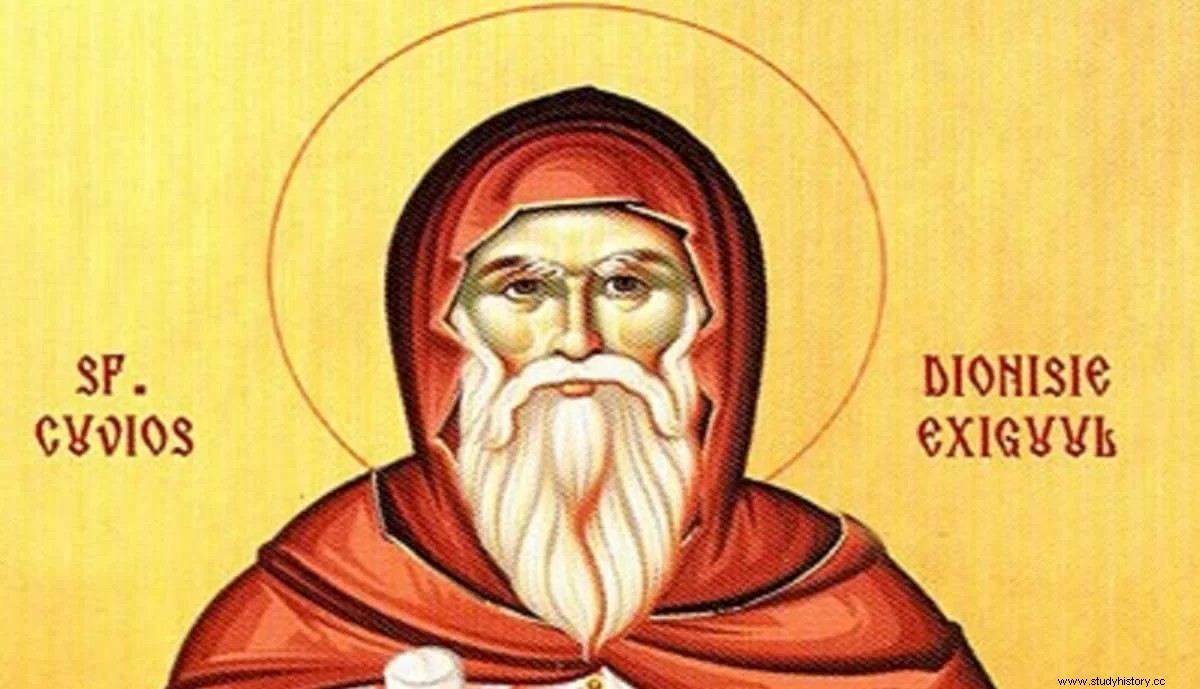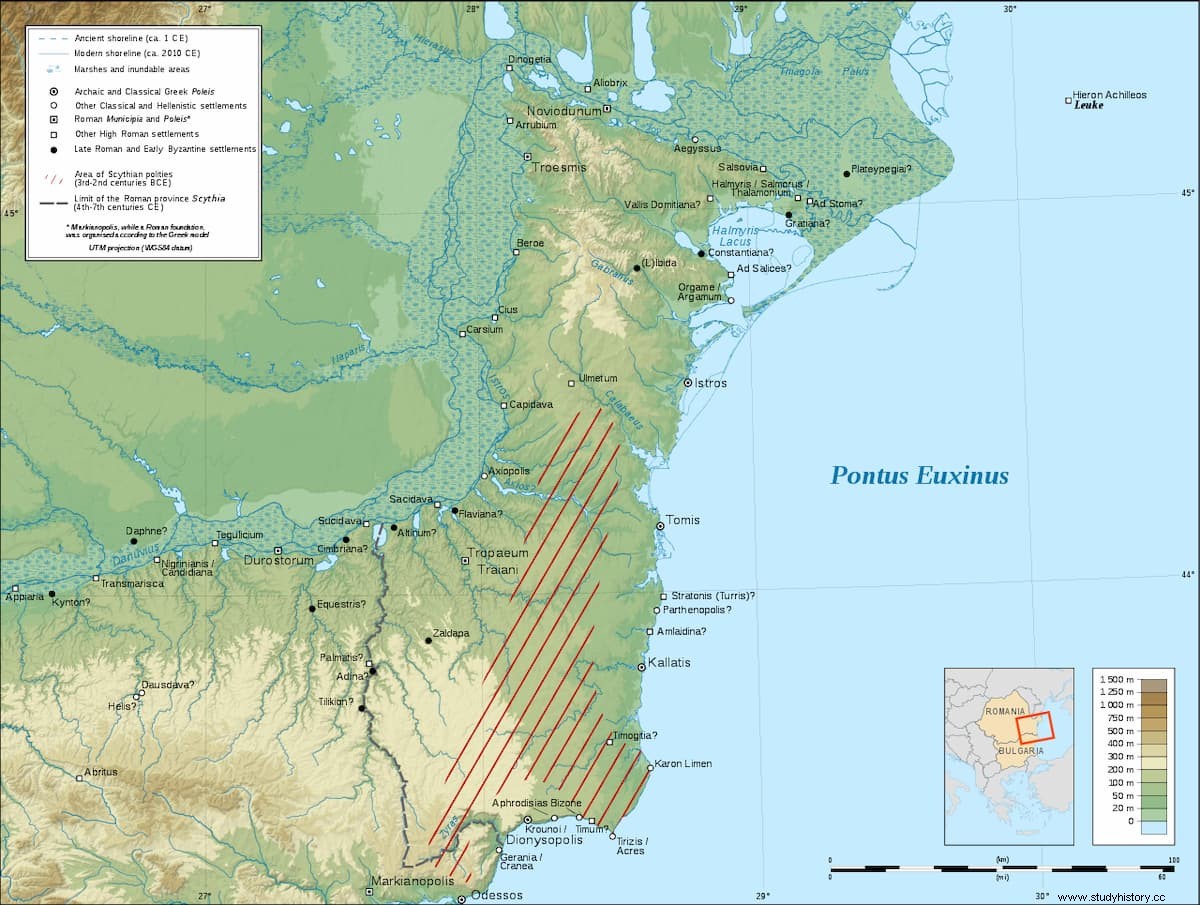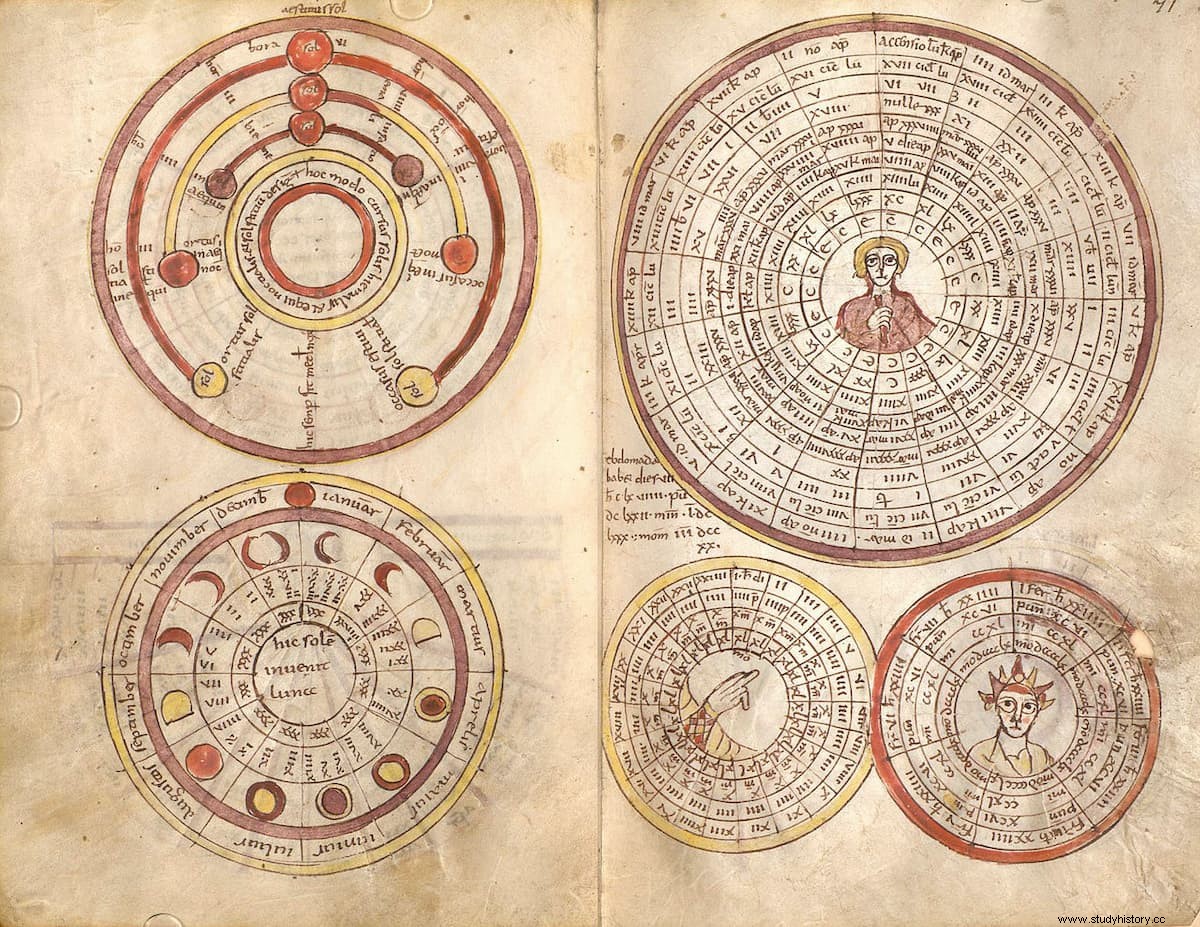One of the main headaches for anyone who tries to calculate anniversaries of events that happened, for example, in ancient Egypt or ancient Greece, is the non-existence in our calculation of a year zero. The numbering goes directly from the year 1 B.C. to the year 1 A.D., which makes it necessary to add an additional year to the account. Thus, the 2,500th anniversary of the Battle of Marathon (490 BC) was in 2011 and not in 2010, despite all the celebrations that were organized this last year.
The fault that there is no year zero lies with a Byzantine monk and mathematician who was born around the year 470 in the region of Scythia Minor, and who lived in a monastic community in the city of Tomis (now Constanta in Romania). Interestingly, the same city where the Roman poet Ovid had died 453 years earlier. He was called Dionysius and later sources, beginning in the 8th century, call him Dionysius Exiguus (the meager or the small ).

The problem was old, and had to do with the Computus paschalis , that is, the calculation of the date on which Easter should fall each year, the day on which Christians celebrate the resurrection of Jesus. For centuries different computers they used their own calculations and unequal lunar cycles, so depending on the place, Easter was celebrated on different days.
Dionysius, who had been living in Rome since the year 500 and was a member of the Roman Curia (the governing bodies of the Church), decided to put an end to the problem and calculate the date of Easter several years from now. As the date of Easter depended on the lunar cycles, it was necessary to calculate the period of time in which a certain number of synodic months (the 29.53 days between two similar phases of the moon) coincided with a certain number of years. solar (365.25 days).
For this he used the metonic cycle of 19 years, named after the Greek astronomer Meton who, in 432 BC, already pointed out that there was a coincidence between the orbital periods of the Earth and the Moon, so that every 19 years the same dates of the year corresponded with the same moon phases. It seems that the Mesopotamians already knew this from the 6th century BC. and used it to predict eclipses. Dionysius was thus able to calculate the dates of Easter for the next 95 years.

However, in his Paschal date tables Dionysus used a way of counting the years called Diocletian era . It was used mainly in Alexandria, from where its use spread throughout the Christian world, and it began the year 1 on the day of the coronation of Emperor Diocletian (August 29, 284 AD). At the same time the Roman custom of identifying the years by the name of the consuls who held office in that year was still in force, and so Dionysius declares that the year in which he writes his tablets is that of the consulship of Probus (There were consuls until 534 AD in Rome and until 541 AD in Constantinople).
Pope Hormisdas (others say John I) realized that the Diocletian years were still being used as a reference. , precisely in memory of Diocletian, an emperor who had persecuted Christians, and ordered Dionysus to reform the calendar to establish a new way of counting and identifying the years.
It is true that, since the second century, some bishoprics in the eastern part of the empire already counted the years since the birth of Christ, but they did not agree on the correct date.
So in 525 AD Dionysius calculated the date of Jesus' birth, for which he based himself on the reign of Herod I the Great and on the date of the founding of Rome. He deduced that Jesus was born in the year 754 Ab Urbe Condita (since the foundation of Rome), although he made several miscalculations that caused him to drift between 4 and 7 years (we know, for example, that Herod died in 750 ab urbe condita ).

In any case he matched year 1 of the year of the Lord (Anno Domini) with 754 Ab Urbe Condita , and he established the system that identifies years before that date as BC (before Christ) and later as A.D. (Anno Domini , in Spanish d.C. , after Christ). Thus, the date of the foundation of Rome became the year 753 BC. (and not 754 BC precisely because there is no year zero).
And it is that Dionysius did not introduce a year zero, so that, as we said at the beginning, it goes directly from the year 1 B.C. to the year 1 AD The reason could be that both Dionysius and the rest of the early medieval scholars were unaware of the number zero, which would not be introduced in Europe by the Arabs (who took it from India) until after the year 1000. Other experts believe that he did not actually introduce a year zero precisely because zero represents nothing and has no extension.
In any case, the B.C./A.D. invented by Dionysus, it would not become popular until much later, when the monk Bede the Venerable used it to date the events of his Ecclesiastical history of the people of the Angles in the year 731. Bede would be precisely the first to use the expression ante vero incarnationis dominicae tempus (i.e., the time before the true incarnation of the Lord), to identify the years before the year 1 Anno Domini .
Later it would be Alcuin of York who would introduce the system in the Carolingian empire, when he was called to Aachen by Charlemagne in 782, popularizing and spreading its use throughout the West. The expression ante Christum (BC) would still have to wait until 1627, when it was introduced by the French Jesuit Denis Pétau. In the East the system would not begin to be used until the 16th century.
